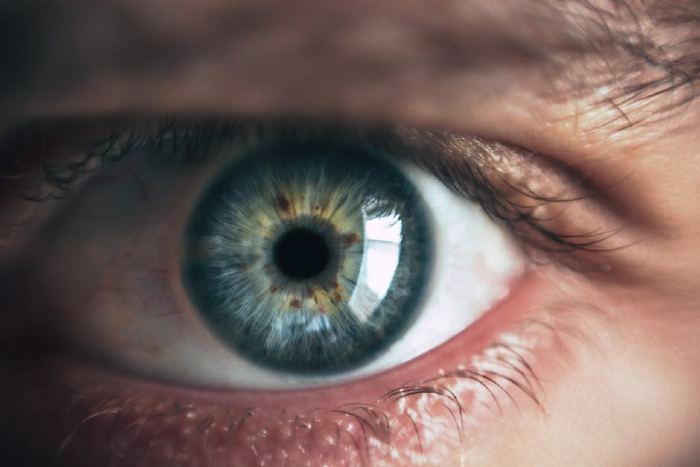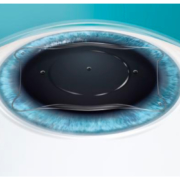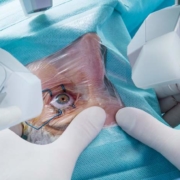Lasik vs PRK: Which Eye Surgery Is Right for Me?
By Dr. Anthony Nappi / May 10, 2022 / 10 min. read

Refractive eye surgery has helped hundreds of millions of people with refractive errors terminate their dependence on eyeglasses or contact lenses. As technology advances over time, more and more types and options for vision correction surgery arise.
During a comprehensive eye exam and consultation, an experienced eye surgeon will take time to learn about your lifestyle, hobbies, and future goals before recommending options for you.
You may have heard that PRK (photorefractive keratectomy) and LASIK (laser-Assisted in situ keratomileusis) are basically the same things. While the end result is the same, differences do exist—the cost, procedure, and recovery are just a few ways PRK differs from LASIK eye surgery.
A thorough comparison to help you discern the differences between Lasik and PRK should do the trick. Let us Dive in.
LASIK vs. PRK: The Procedure
Both LASIK and PRK procedures reshape irregular cornea tissue using lasers. But they differ in some crucial ways:
What Happens During PRK?
The typical PRK process is relatively straightforward. It involves:
Step 1: Get Anesthesia
Your doctor will give you numbing drops to prevent feeling any pain during the surgery. If you are anxious, you may get medication to help you relax.
Step 2: PRK Procedure
The surgeon will remove the top layer of your cornea tissue—the epithelium. The process will take around 30 seconds. Next, an excimer laser reshapes your cornea based on your eye measurements, fixing any irregularities. It can take roughly 2-15 seconds. The entire process is less than one minute.
Step 3: Post-Care
A special bandage resembling a contact lens is placed on the cornea. It will help the tissues beneath heal.
What Happens During LASIK?
Though similar to PRK, LASIK does have its differences. A typical procedure involves:
Step 1: Receive Anesthesia
Your surgeon will administer anesthesia to numb your eye tissues.
Step 2: LASIK Procedure
A femtosecond laser cuts a small flap into your epithelium, allowing your doctor to fold the layer back like a hinge while the other layers are reshaped with a laser.
Since it remains attached, the surgeon can put back the epithelium in its place at the end of the procedure, unlike the PRK procedure, where the epithelium is completely removed.
Step 3: Healing
Once the flap in the epithelium is put back over the rest of the cornea tissue, it will start healing.
LASIK vs. PRK: Recovery
During both the Lasik and PRK surgery, you may feel a little bit of pressure or discomfort. You may also notice some changes in your vision. But there are some notable differences in the recovery processes.
PRK Recovery
After the PRK surgery, they will place a bandage over your eye. As your epithelium heals, it may cause some irritation and sensitivity to light for a few days. Your vision will be somewhat blurry until they remove the bandage after about 4-5 days.
If you experience some pain and discomfort, your doctor may give you medication for relief. Also, they will prescribe lubricating or medicated eye drops. Eye drops will help keep your eye moist as it heals.
Your eye doctor will instruct you not to drive until your vision is normal. The complete healing process can last about a month or so. But ensure you visit your doctor regularly for checkups until your eye is fully healed.
LASIK Recovery
Unlike PRK, recovery from LASIK is faster. You’ll probably see clearly a day after a LASIK surgery. Immediately after surgery, you may feel some burning in your eyes, but it will disappear after a few hours.
As your eye heals, you won’t experience much discomfort or pain. If irritation persists, your doctor will give you some lubricating or medicated eye drops. You should expect to recover within a few days after the procedure.
After one month, LASIK and PRK results are similar.
LASIK vs. PRK: What Are the Side Effects?
As with any surgical procedure, you should research any common side effects of LASIK and PRK to minimize surprises during recovery.
PRK Side Effects
Some PRK post-op expectations include:
- Mild discomfort or itching
- Light sensitivity for about 72 hours
- Halos or bursts of light for a few weeks
- Cloudy vision
These problems may not last long. Your eye doctor will tell you how you can manage them. More serious side effects like scarring of your cornea, eye infections, and vision loss are rare.
LASIK Side Effects
Here are some of the most common side effects of LASIK surgery:
- Discomfort
- Soreness
- Dry and itchy eyes
- Light sensitivity
- Glare and halos, especially around lights at night
- Blurry vision
- Red patches in your eye
These side effects may last for a few days to a few months.
LASIK vs. PRK: Procedure Safety
Is PRK safer than LASIK?
Yes, PRK is much safer compared to LASIK. PRK is safer than LASIK because the PRK is performed on the corneal surface. Since there isn’t a corneal flap, there are zero risks of flap-related complications. However, both have less than a 1% complication rate.
LASIK vs. PRK: Who is a Suitable Candidate?
Generally, ideal candidates for PRK and LASIK are people who experience refractive errors and want to achieve crystal-clear vision without relying on corrective lenses. But some requirements for each surgery differ.
Am I a Good Candidate for PRK?
You may be the right candidate for PRK if you meet the following requirements:
- Have a thin cornea
- Free from eye infections or injuries for at least a year
- Not suffering from dry eye syndrome
- No eye problems like keratoconus
- Stable eyeglasses and contact lenses prescription
- Not pregnant or nursing
- Free of medical conditions like arthritis, diabetes, glaucoma, or autoimmune diseases
- Not engaging in high-intensity activities or high-contact sports
- At least 18 years old
Am I a Suitable Candidate for LASIK?
If you are a suitable candidate for LASIK eye surgery, you should meet the following criteria:
- Have a thick cornea
- Have a stable eyeglass and contact lenses prescription
- Should not have certain health problems like diabetes
- Free from certain eye diseases, including keratoconus, severe cataracts, and more
- Should not have any current eye infections or injuries
- Should not be pregnant or nursing
- No significant dry eye
- Must be at least 18 years old
LASIK vs. PRK: What’s the Cost?
Costs will depend on your eye doctor. Out-of-pocket costs for LASIK and PRK can be significantly lowered by financing options, HSA, and FSA. But PRK may be more expensive than LASIK. PRK may cost slightly more than LASIK because you will need more check-ins after surgery to remove the bandage and monitor your eye’s healing.
Your health insurance plan likely won’t cover PRK or LASIK since they’re considered elective surgery.
Figures and Facts from Patients of LASIK and PRK Surgery
Here are some interesting facts about both PRK and LASIK that you should know:
- More than 19 million patients have undergone LASIK or PRK, and over 95% of these patients have stated that they were happy with the results
- Nearly 98% of patients achieve 20/40 or better vision
- Approximately 5% of patients who undertake PRK will need to wear glasses or contact lenses, depending on age.
- There is a greater than 96% success rate if you undergo LASIK surgery
- Greater than 90% of patients get a perfect 20/20 vision
- Up to 50% of the patients end up with a better vision than the standard 20/20
Verdict: Deciding Between PRK vs. LASIK Surgery
Before choosing between LASIK and PRK eye surgery, you should consult your doctor. The Ophthalmologists at BDP LASIK help you determine the safest and most appropriate treatment for you.
BDP Vision Correction Centers in Scottsdale and Tucson offer FREE consultations for LASIK and PRK procedures with our team of experts. Book your appointment online or contact us to schedule your complimentary consultation today.






 iStock
iStock
